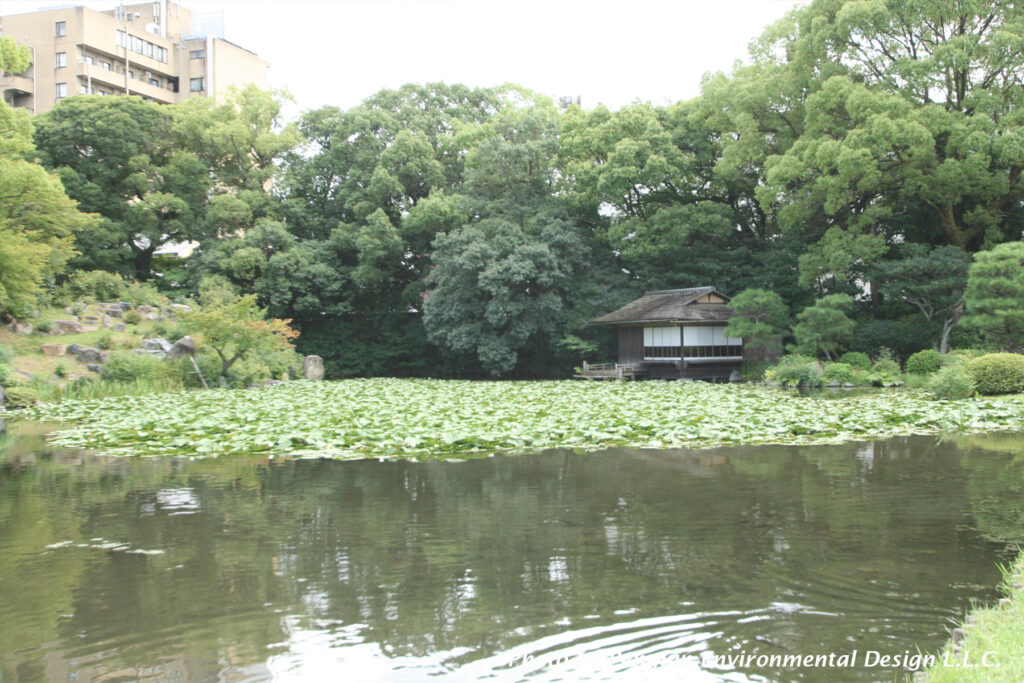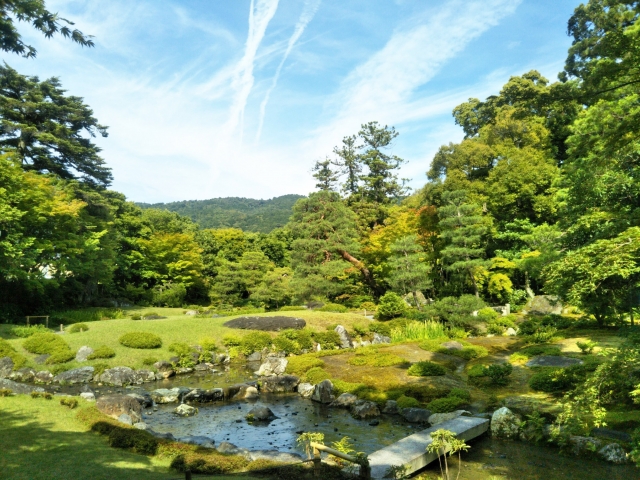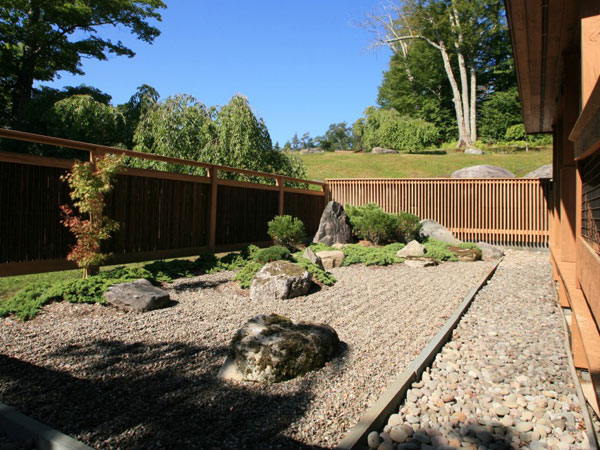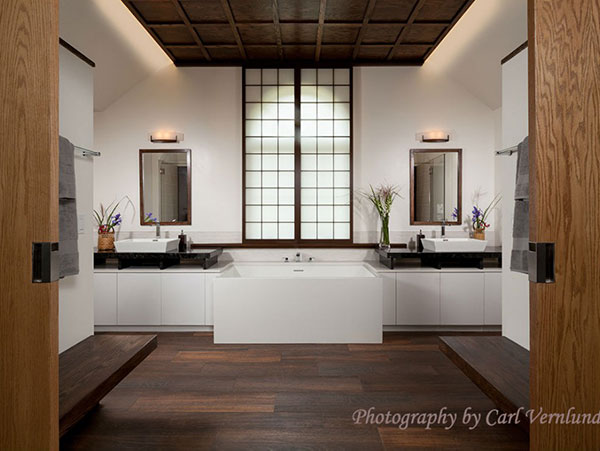As I mentioned in the previous blog about borrowed scenery, we cannot control the scenery beyond gardens. Your neighbor’s big house might block a nice view. Therefore, this garden technique may not be versatile. We can use borrowed scenery under some limited conditions only.
In Kyoto city, there are a lot of Japanese gardens. We can enjoy some gardens with borrowed scenery at the temples at the foot of the mountains. I recommend you to visit the garden of Entsu-ji temple. There are no tall plants in this garden. Over the green hedge border of the garden, you will see Hiei Mountain far away through straight trunks of cedars.
Kyoto City has the most strict preservation rules to limit the height of buildings. We cannot build more than 10-meter-high buildings at the foot of the mountains. However, Kyoto City has failed to preserve some historic Japanese gardens with their original borrowed sceneries due to modern economic activities. For instance, Shosei-en, the garden of Higashi Honganji Temple, is located on the west side of the Kamo River. The location is not the area of the most strict preservation. As a result, we see modern buildings over the garden as shown in the photo.

Controlling borrowed scenery with long-term vision
Also, keeping the original borrowed scenery in historic gardens is hard because trees grow. I am interested in how to keep up the quality of the garden even if we cannot preserve the original design. I think that Murin-an Garden is an interesting example of this case. Murin-an is a residence that used to be owned by Yamagata Aritomo, a former prime minister of the Meiji Period. Jihei Ogawa, a Japanese gardener, created the garden while maintaining the view of Higashiyama Hill.

It has been around 100 years since the house and garden were completed. Naturally, overgrown trees block the borrowed scenery. The Japanese landscape company that has maintained this garden appreciates the beauty of the garden. They simulated future visions of trees and made a long-term maintenance plan including which and how to prune trees. The current borrowed scenery might be different from the original one. Yet, we still enjoy this garden with borrowed scenery. I think that their method is one of the answers to this technique.


